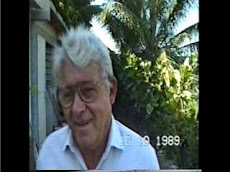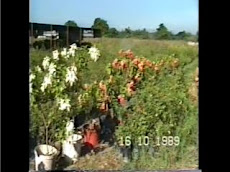New Product: Microcat®-DF
A new defoaming liquid, known as Microcat®-DF Biodefoamer has been introduced by
Bioscience, (http://www.bioscienceinc.com/). The synthetic material can be used in aeration tanks, sludge digesters and other
wastewater treatment plant process facilities to suppress foam without inhibiting the biomass or
having other side effects of conventional defoamers.
Because Microcat-DF does not contain silicones, mineral oil, nitrogen or phosphorus
compounds, it is compatible with all Microcat microbial-enzyme formulations and with naturally
occurring biomass.
WWTP foams may result from filamentous bacteria
infestation, rapid temperature or pH fluctuations,
influent composition changes or shock loading. It can
also occur at plant start-up.
Infestation with filamentous micro-organisms, such
as Nocardia or Microthrix is often a symptom of
excessive fat, oil and grease (FOG) in the influent
wastewater. In this case, use of Microcat-DF with
Microcat-XF filament controller or other Microcat
products for digesting FOG, provides an economical
"green" solution to foaming problems, while also
reducing Nocardia that inhibit settling and produce poor effluent quality.
Microcat-DF is generally metered continuously into the foam source. The liquid has a shelf life
of two years without settling.
lunes, 15 de marzo de 2010
NEW DEFOAMER FOR WATER TREATMENT PLANTS
Suscribirse a:
Enviar comentarios (Atom)
Vistas de página en total
GREEN CHEMICALS
The Green Seal certification is granted by the organization with that name and has a great number of members contributing with the requirements to pass a raw material or a chemical product as "green". Generally for a material to be green, has to comply with a series of characteristics like: near neutral pH, low volatility, non combustible, non toxic to aquatic life, be biodegradable as measured by oxygen demand in accordance with the OECD definition.
Also the materials have to meet with toxicity and health requirements regarding inhalation, dermal and eye contact. There is also a specific list of materials that are prohibited or restricted from formulations, like ozone-depleting compounds and alkylphenol ethoxylates amongst others. Please go to http://www.greenseal.com/ for complete information on their requirements.
For information on current issues regarding green chemicals, see the blog from the Journalist Doris De Guzman, in the ICIS at: http://www.icis.com/blogs/green-chemicals/.
Certification is an important — and confusing — aspect of green cleaning. Third-party certification is available for products that meet standards set by Green Seal, EcoLogo, Energy Star, the Carpet & Rug Institute and others.
Manufacturers can also hire independent labs to determine whether a product is environmentally preferable and then place the manufacturer’s own eco-logo on the product; this is called self-certification. Finally, some manufacturers label a product with words like “sustainable,” “green,” or “earth friendly” without any third-party verification.
“The fact that there is not a single authoritative standard to go by adds to the confusion,” says Steven L. Mack M.Ed., director of buildings and grounds service for Ohio University, Athens, Ohio.
In www.happi.com of June 2008 edition, there is a report of Natural formulating markets that also emphasises the fact that registration of "green formulas" is very confused at present, due to lack of direction and unification of criteria and that some governmental instittion (in my opinion the EPA) should take part in this very important issue.
Also the materials have to meet with toxicity and health requirements regarding inhalation, dermal and eye contact. There is also a specific list of materials that are prohibited or restricted from formulations, like ozone-depleting compounds and alkylphenol ethoxylates amongst others. Please go to http://www.greenseal.com/ for complete information on their requirements.
For information on current issues regarding green chemicals, see the blog from the Journalist Doris De Guzman, in the ICIS at: http://www.icis.com/blogs/green-chemicals/.
Certification is an important — and confusing — aspect of green cleaning. Third-party certification is available for products that meet standards set by Green Seal, EcoLogo, Energy Star, the Carpet & Rug Institute and others.
Manufacturers can also hire independent labs to determine whether a product is environmentally preferable and then place the manufacturer’s own eco-logo on the product; this is called self-certification. Finally, some manufacturers label a product with words like “sustainable,” “green,” or “earth friendly” without any third-party verification.
“The fact that there is not a single authoritative standard to go by adds to the confusion,” says Steven L. Mack M.Ed., director of buildings and grounds service for Ohio University, Athens, Ohio.
In www.happi.com of June 2008 edition, there is a report of Natural formulating markets that also emphasises the fact that registration of "green formulas" is very confused at present, due to lack of direction and unification of criteria and that some governmental instittion (in my opinion the EPA) should take part in this very important issue.

















































No hay comentarios:
Publicar un comentario